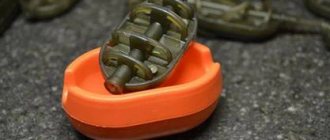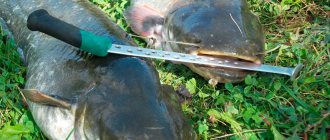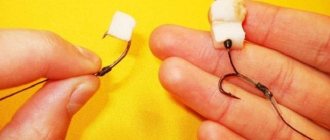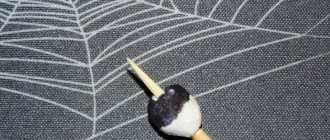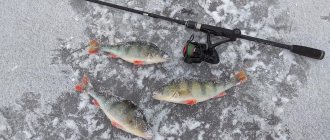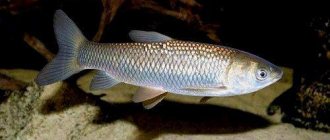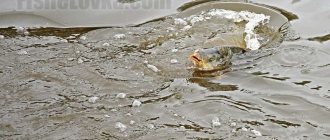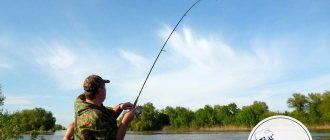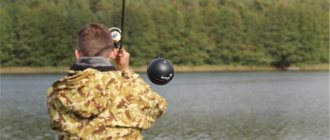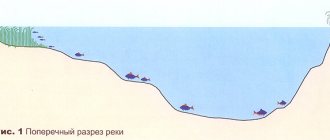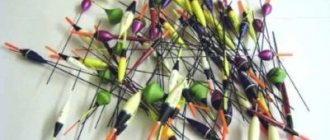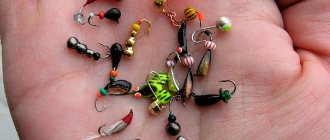Published: 08/19/2016 23:54
Braided fishing line is significantly superior to monofilament in strength, which is what captivates anglers. In matters of feeder fishing, the almost zero stretchability of the braid is also important. But can braided material completely replace monofilament? The answer may seem strange to an inexperienced fisherman, but the verdict will be the same - no!
Braid and monofilament have their own strengths and weaknesses and are used in different conditions, so they do not exclude, but complement each other. In what conditions is monofilament used and how to choose a fishing line for feeder fishing, we will look below.
In what cases is it preferable to use monofilament fishing line?
Monofilament fishing line is used for fishing at short and medium distances in reservoirs without a pronounced water current. Since we are not talking about fishing at ultra-long distances and in strong currents, the advantages of thin braid are unclaimed, but high-quality monofilament line:
• cheaper than branded braid; • better resists abrasion from hard vegetation, snags and shells; • thanks to the small stretch coefficient, it “knits” fish better, not being inferior to braided line in sensitivity; • forgives some of the fisherman's mistakes.
Monofilament fishing line is also used on rivers with a current, in cases where the casting range is small and the bottom is covered with “evil” shells. For long casting distances, monofilament has greater resistance to water flow than braided line, so only a fishing line insert is used - a shock leader.
Monofilament fishing line is also used when fishing for carp with a feeder on commercial reservoirs using flat feeders. In this case, the stretchability of the fishing line is its advantage, since it allows you to dampen the jerks of the fish, and sensitivity in carp fishing is not even a minor factor. To be fair, it is worth noting that the feeder is used when catching small “tuzik” carp weighing up to three kilograms. In trophy fishing, it is preferable to use special carp rods.
Cons of monofilament
Progress in the chemical industry does not stand still, crowding out monofilament in popularity with other types of polymer cords.
As a result of this competition, classic fishing lines lose in terms of the ratio of strength to diameter of the material, and also have high stretch coefficients, which reduces the sensitivity of the equipment, especially when fishing at long distances, as well as the ability to tightly control the bait when making retrieves. The synthetic product is sensitive to ultraviolet radiation, losing its basic qualities and, in particular, strength, and often has a memory that is not entirely necessary for fishing threads, completely losing its original shape, imitating the bobbin of a reel or holder on which the cord is wound.
How to choose a fishing line for a feeder
You should not equip your feeder reel with cheap fishing line from an unknown manufacturer. In addition to the worse breaking load characteristics compared to high-quality fishing line, such fishing line often has greater elongation, and what’s even worse - it has “memory”, i.e. retains the resulting deformation after eliminating the source of the deformation.
World-famous fishing line manufacturers do not ignore the issues of feeder fishing, and develop fishing line adapted specifically for feeder fishing. By the way, match fishing lines for the most part are excellent for feeder fishing. Their main feature is their greater specific gravity, which allows the equipment and the line itself to sink into the water faster, which in no way interferes with their use in feeder fishing.
An excellent example of specialized feeder lines are the Feeder Line and Ultron Feeder Pro from the Japanese company Momoi. Both fishing lines have low stretch, which at short and medium distances allows you to record careful bites no worse than when using braid. But this slight stretchability has a positive effect on fishing and partially dampens the jerking of the fish. The lack of memory and sufficient rigidity of the fishing line allows you to knit loop rigs directly on the main fishing line, and in case of fishing on a soft bottom, these rigs can be used for several fishing trips.
The Ultron Match Fishing line has also proven itself to be excellent on feeder gear . Unlike those described above, it is less rigid, which has a positive effect on casting distance. This fishing line is slightly inferior to Ultron Feeder Pro in strength, which is due to the specifics of the production of sinking fishing line.
If we talk about wide-profile fishing lines, then such fishing lines can be used in feeder fishing as Ultron Zex Copolymer and Ultron Elite Platinum . A distinctive feature of the latter is its softness, which helps to increase casting distance. If in-line installation is used, it can be formed on the main fishing line, but for loop installations an insert made of a stiffer fishing line will be required.
You can’t ignore the specialized fishing line for the Momoi Shock . The shock leader bears the brunt of dealing with the sharp edges of stones and shells, so it must have increased resistance to abrasive damage. Momoi Shock Leader line is used with both thinner monofilament line and braided line. It is also possible to use feeder lines as a shock leader, but their diameter should be forty percent larger than that of the main line.
Another task of the shock leader is to work when casting heavy equipment, when it is the shock leader that takes on the impulse load of the cast, and then simply pulls out the thinner main line. The length of the shock leader must be at least twice the length of the rod.
Parameters of monofilament line
4.1 Diameter
Why should you pay attention to this characteristic? Firstly, different types of fishing use different fishing line diameters. This parameter will affect the distance of the bait being thrown. For example, when using a thin line, the bait will be cast further, but the small diameter will facilitate its drift by the wind. Secondly, it also affects the size of the fish; the thinner it is, the smaller the prey, otherwise the fishing line will break. Thirdly, the smaller the diameter, the more invisible the line is to the fish in the water. Fourthly , thin fishing line wears out quickly.
Diameter (thickness or cross-section) is measured in millimeters.
Table for determining the diameter of the fishing line by the number on the package
4.2 Load
The load of the fishing line is related to its thickness (diameter). This parameter is reflected on the package in kg; the most common line diameter is from 0.06 to 1 mm.
4.3 Stiffness
Rigidity affects the strength of the line in the area of knots. Also, such lines come off the reel worse, and soft lines tend to twist and get tangled, so each angler decides for himself which line to use.
You should know:
- All monofilament lines are twisted.
- if monofilament is used as a leader, then the less rigid line will twist faster under the influence of the nozzle or the reel fraction in a strong current and the leader will stretch and become unusable.
Thus, a rigid line:
- Sturdy but in knot-free condition.
- Doesn't get confused.
- Does not stretch and easily returns to its original form.
- It practically does not absorb water and does not lose its chemical properties.
- It has a memory, which affects the coming off the spool and its passage through the rings of the gear and, accordingly, makes it difficult to make a long cast.
- High cutting speed, which is good.
Soft line:
- Less durable.
- Confused.
- It stretches and does not return to its original position.
- Absorbs water.
- Holds knots very well.
- Elastic.
4.4 Stretching
This characteristic indicates the ability of the fishing line to stretch under the influence of equipment elements and return to its original position. All monofilament lines have a high stretch coefficient. This is both bad and good.
Pros:
- shock absorption when biting large fish, especially when using flexible gear, which will allow you to catch a large trophy on a thin line.
Minuses:
- severe wear of the fishing line;
- excessive stretching will allow an increase in bait breakages, since there is no control over stretching, but there is a limit;
- affects the landing of fish to the shore, due to the fact that the fishing line does not drag it, but only stretches.
You should know that the smaller the diameter, the greater the stretch.
An interesting video experiment from the author of marikfionhttps about the effect of monofilament stretchability on hooking
4.5 Memory
Line memory is the inability of the line to regain its previous position, which affects casting and unwinding of the thread from the reel. One of the negative properties of monofilament.
Shimano, Daiwa, etc. produce monofilament fishing lines with the smallest memory.
4.6 Interaction with water
In this regard, monofilaments have an advantage over braided lines, but not over fluorocarbon. Mono fishing lines are known to absorb water. Some models are a little larger, some smaller. When water is absorbed, the fishing line swells and becomes noticeable in the water; with prolonged fishing, it also becomes less durable.
Advice:
- Before you wind such a fishing line onto a reel, you need to dry it, since having absorbed water, it also stretches more.
Line diameter for feeder
The peculiarity of feeder fishing is that the diameter of the fishing line, and in other words, its breaking load, is determined not in accordance with the weight of the expected trophy, but in accordance with operational requirements. The only exception is carp fishing with heavy feeders, but this is no longer a classic feeder, but its adaptation for carp fishing.
By the concept of operational requirements we mean the ability of the fishing line to withstand peak loads when casting equipment of a certain weight over a given distance and the ability to tear the feeder off the bottom when fishing on a steep slope. The first part of the issue is solved by using a shock leader, the second - only by using a fishing line with a sufficient margin of safety.
Let's move on to the numbers. For fishing with a picker or a light feeder on a clean, flat bottom with a casting distance of up to 25-30 meters and using feeders weighing up to 30 grams, a high-quality fishing line with a diameter of 0.15 millimeters will be sufficient. If you increase the casting distance to 40 meters and the weight of the feeder to 40 grams, you will need a fishing line with a diameter of 0.18 millimeters. But this is only in the case of fishing on lakes and rivers without “evil” edges and dumps. Otherwise, the minimum diameter will be 0.22 millimeters. In addition to increasing the breaking load in this version, increasing the diameter of the fishing line also provides greater resistance of the fishing line to cutting and abrasion at the edge.
For fishing on large bodies of water, where you need to cast a heavy feeder weighing 60-80 grams, you will need a fishing line with a diameter of 0.25 millimeters. When the weight of the feeder increases by more than 100 grams, the diameter of the fishing line needs to be increased to 0.28-0.3 millimeters, but in this case we are talking about a shock leader, since in such conditions monofilament fishing line is practically not used as the main one, giving way to braided fishing line fishing line
As we can see from the above, to equip a picker and a light feeder you will need a fishing line with a cross-section of 0.15-0.18 millimeters, and the most optimal for a medium and medium-heavy class feeder will be a fishing line with a cross-section of 0.22-0.25 millimeters.
Heavy river feeders are equipped with braided line with a monofilament or fluorocarbon shock leader with a diameter of up to 0.32-0.35 millimeters, and when fishing for carp, the breaking load of the fishing line is determined in accordance with the weight of the expected trophy.
Since increasing the thickness of the fishing line negatively affects the sensitivity of the gear, you should not get carried away with an excessive safety margin. Feeder reels are equipped with two spools, which allows you to wind fishing line of different diameters on both spools and use them depending on the situation. Moreover, additional spools are sold separately for branded reels, which further expands the angler’s capabilities.
Fishing Braided Lines
Representatives of this group are known as “braid” - thin synthetic threads connected into a single cord. They have a special impregnation and, in some cases, an additional shell. Such options are characterized by increased strength. VyborExpert specialists included 4 nominees in the rating that received the maximum positive feedback from beginners and professional fishermen.
Mask Ultra x 4 110m d-0.10 orange
Fishing line is designed for fishing water bodies using ultra-light tackle. To make braided cords, 4 Super PE threads are used. Thanks to special impregnation, the surface is even and smooth, which improves sliding through the guides when casting. It can be used in ponds with rocky bottoms due to its wear resistance and resistance to damage.
Advantages:
- No “residual memory” effect;
- Use with light weight baits;
- Increased density and wear resistance to abrasives;
- Low friction.
Flaws:
- The orange color is washed out a little.
The fishing line is sold with a diameter from 0.06 to 0.2 mm, which is important for a light float fishing rod.
Kosadaka Super Line PE X4 150m light-green 0.20 mm
4-strand “braid” designed for spinning and feeder fishing. Thanks to its high breaking load - up to 12.2 kg, it allows you to catch large pike perch. Good abrasion resistance makes it possible to use it in difficult water areas with a large amount of snags, vegetation and shell rock.
In the production of the cord, the material used was modern polyethylene. Kosadaka is a good fishing line that is characterized by elasticity and high strength. It responds well to bites of any strength, this also applies to the use of a feeder. The product does not stretch, so it always remains sensitive.
Advantages:
- Practical marking – up to 150 m;
- Budget price;
- Suitable for fishing with wobblers at shallow depths;
- Good tensile strength;
- Can be used for feeder fishing.
Flaws:
- Slightly thick.
The light green tint is chosen by users who prefer visual control of the “braid” when fishing jigging. This allows you to estimate the current location of the bait.
DreamFish Silver Braid White 150 m 0.38 mm 20.5 kg
Line from an American manufacturer. When used, it creates the effect of the presence of a group of small fish. Predators give an immediate reaction and, when a really visible moving bait object appears, they immediately attack. The “braided line” is wear-resistant, which allows it to be used in jig fishing.
The "braid" does not stretch. The material that was used for its production is not sensitive to ultraviolet radiation, so the original color remains unchanged. Thanks to this, it has gained popularity among fans of twitching and fishing using spinners and spinners. The advantage of the tackle is its good casting range. Upon tactile contact, it is soft, slippery, and does not cut your hands when using a heavy bait.
Advantages:
- Suitable for both large and small fish;
- Relevant for jig fishing, as well as twitching;
- Does not stretch;
- UV resistant;
- Good casting distance.
Flaws:
- Over time it loses its original color.
DreamFish Silver Braid White is easily impregnated with additional compounds, which protects it from freezing when used in winter.
Shimano Technium 300m 0.285mm Black
One of the most popular models in the Shimano brand line. The “Technium Triple construction” technology is used in the production of the product, which allows for excellent resistance to abrasions and abrasion, a minimum elongation rate (only 12%) and increased wear resistance.
A special feature of Shimano Technium 300 m 0.285 mm Black is its three-layer structure, thanks to which this cord resembles both “braid” and monofilament. The surface of the thread is treated with a special coating, guaranteeing transparency and maximum smoothness. Thanks to the latter characteristic, the casting distance is improved.
Advantages:
- Suitable for feeder, float and spinning fishing;
- Highest wear resistance;
- Excellent range;
- Lack of memory;
- Several modifications depending on the type of fishing.
Flaws:
- Each modification has only one color.
Shimano Technium 300m 0.285mm Black is a good alternative to fluorocarbon that can be used as a shock leader.
Line for leashes
The leash is the weakest part of the feeder equipment. Adding a certain margin of safety by increasing the diameter of the leash often results in a weakening or complete cessation of the bite, so this method is ineffective. There is only one thing left to do - make leashes from high-quality fishing line and change them periodically, especially if fishing is carried out on stones, shells or among hard vegetation.
Some of the best fishing lines for making leashes are winter fishing lines from Momoi. Why winter ones? The fact is that in addition to the ability to work at low temperatures, winter fishing lines stretch well, which gives the leash shock-absorbing properties. A good example is Ultron Elite Platinum and Pro-Max Prestige in 30-meter rolls. Fluorocarbon fishing lines are also worthy of attention. They are more resistant to abrasion, which is important when fishing from the bottom. In addition, the refractive index of light in fluorocarbon (fluorocarbon) and in water is almost the same, which makes this fishing line less noticeable to water. In the Momoi line of fishing lines, this type is represented by winter fishing lines Ultron Fluorocarbon and Pro-Max Flurocarbon in 25-meter reels.
In general, other fishing lines from Momoi or other manufacturers can be used to make leashes. The angler chooses the color of the fishing line, its diameter and stiffness based on the fishing conditions and the required characteristics, but the leading line must:
• have high breaking load values; • do not lose strength at the nodes; • have no memory; • be inconspicuous in water or against the background of the bottom of a reservoir (depending on conditions).
Classification of fishing line by physical properties
Monofilament fishing lines are:
- drowning;
- conditionally drowning;
- fluorocarbon balanced;
- fluorocarbon floating.
3.1 Sinking monofilaments
They sink on their own due to their water absorption properties. This is a new generation fishing line of the fluorocarbon type. Due to the peculiarity of absorption, the fishing line remains strong and does not lose its properties.
Interestingly, there is a method for turning an ordinary fishing line into a sinking one. To do this, the surface of the fishing line is treated with a special solution “sinkant”.
3.2 Conditionally sinking monofilament lines
This type of monofilament includes most fishing lines used on match rods when fishing for carp. The peculiarity of the thread is that it does not sink on its own; it must be drowned using a weight and the tip of the tackle.
3.3 Fluorocarbon balanced monofilament lines
Such monofilaments are used with special baits and when fishing in a specific layer of water. They have not found their application on the Russian market.
3.4 Fluorocarbon floats
This type is the most common and includes all those fishing lines that anglers use for all types of fishing.
What should a leash be like?
As mentioned above, an excessively thick leash can stop the bite. Therefore, you should use a leash of minimum thickness with the minimum breaking load allowed under specific fishing conditions. The thickness of the leash, as in the case of the main line, is chosen not so much from the weight of the trophy, but from the fishing conditions.
When catching small bream, silver bream and roach on a clean bottom, a leash with a cross-section of 0.1-0.11 millimeters is sufficient. Since a feeder rod, when fished skillfully, dampens the jerks of the fish, in a clean area of the reservoir with such a leash you can defeat even a kilogram bream. Sometimes, when large fish bite capriciously, you have to use this tactic, but for targeted catching of bream it is better to increase the diameter of the leader to 0.12-0.14 millimeters.
But it was not for nothing that the clause about a clean day was made! A leash with a cross-section of 0.1 millimeters is instantly cut by grass and shells, leaving the angler with no chance to realize a bite. Therefore, when fishing on the edge, it is not advisable to use a leash thinner than 0.12 millimeters. The next point is the thickets of grass in the coastal zone. On a leash of 0.12, you can confidently bring a three-hundred-gram bream out of the depths, but already near the shore it gets stuck in a carpet of aquatic vegetation, from which it is no longer possible to remove it on a thin leash. It is for this reason that in the summer it is necessary to install leashes up to 0.18 millimeters in cross-section, although catching large fish is not predicted.
Based on the above, we conclude that for feeder fishing you will need leashes with a cross-section from 0.1 to 0.18 millimeters. Thicker leashes are needed only when purposefully catching large fish and their breaking load is determined by the weight of the intended trophy.
Myth 2 Fluorocarbon is not visible underwater.
Manufacturers claim that fluorocarbon is invisible under water, especially compared to monofilament, unfortunately this statement is quite difficult to prove or disprove, we do not know how fish see.
We recommend: Minimum fish sizes allowed for catching for the Far Eastern fishery basin, save to bookmarks
From various tests of these lines, there is little or no difference in visibility between nylon lines and fluorocarbon lines.
Refractive index:
- Water – 1,333.
- Fluorcarbon – 1.42.
- Nylon monofilament - range from 1.53 to 1.62.
As you can see, the difference in numbers is not big. Again, we should not forget that any fishing line, when lowered into the water, will create various vibrations and vibrations, which the fish perfectly feels with its lateral line, and the larger the diameter of the fishing line, the stronger these vibrations will be, so any fishing line under water will be noticeable to the fish.
This explains that the worse the bite in a pond, it is most effective to use a fishing line with small diameters, up to 0.08 mm, this reduces the vibrations of the fishing line in the water, and the fish are less afraid.
Here are the results of our test:
Test layout
The photo clearly shows both types of fishing line; in the summer we will definitely conduct a test in a natural body of water, underwater, lowering the camera under water.
How to tie a fishing hook correctly
There are many knots for tying hooks, but as practice shows, there is no particular need to know them all. It is enough to master the one given below - the most universal and reliable knot, which in the fishing circle is called “universal”. With its help you can tie any hook, whether it has a ring or a spatula - it doesn’t matter. In order to tie a hook (a large offset one is taken in the photo for better visualization) with this knot, you need to fold the leader line in half (Fig. 1) and, holding the hook with two fingers by prying it, press the open loop of the folded line with the pad of your thumb. Next, the free end of the fishing line in the direction from the back of the hook to the shank is wrapped around the hook and the fishing line located along it (Fig. 2,3).
A total of 7-8 turns are performed, after which the free end of the fishing line is inserted into the loop (Fig. 4), which was pressed with the pad of the finger. Next, by alternately pulling both ends of the fishing line, the knot is tightened and shifted to the ring or blade (Fig. 5). Before final tightening of the knot, it must be moistened (usually with saliva), which will ensure better tightening of the knot and reduce chafing of the line. After tightening, the free end of the fishing line is cut so that a tail of about 2 millimeters remains. That's it, the hook is attached.
How to attach a leash to a rig
In feeder fishing, a simple and reliable method of attaching leashes “loop to loop” is used (Fig. 6). To do this, a loop is formed on the main line and at the end of the leash, which is knitted with a triple knot (Fig. 7). The loop is knitted as follows: the fishing line is folded in half (Fig. 8), an open loop is formed with the double end (Fig. 9), after which it wraps around one arm of the loop three times (Fig. 10). The knot is wetted and tightened. The free tip is carefully trimmed (Fig. 11).
Now, to connect the leash, it is enough to thread the loop of the leash into the loop of the main fishing line (Fig. 12), and then thread the hook into the loop of the leash and pull the entire leash through this loop (Fig. 13). After tensioning, we obtain a finished connection (Fig. 14), which is the loose fastening shown in Fig. 6. By performing the operation in the reverse order, it is easy to remove the leash from the equipment.
